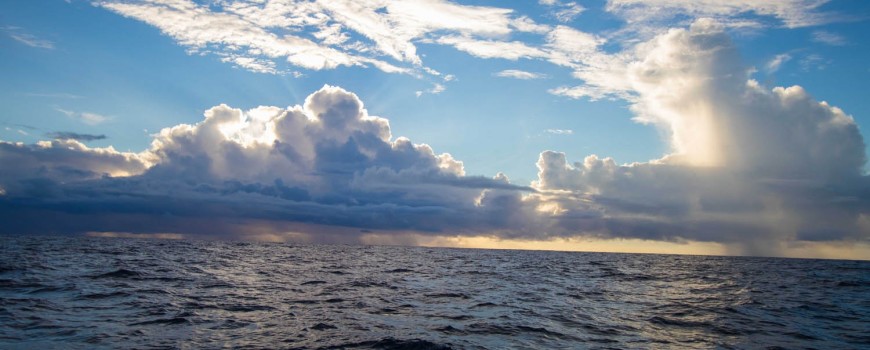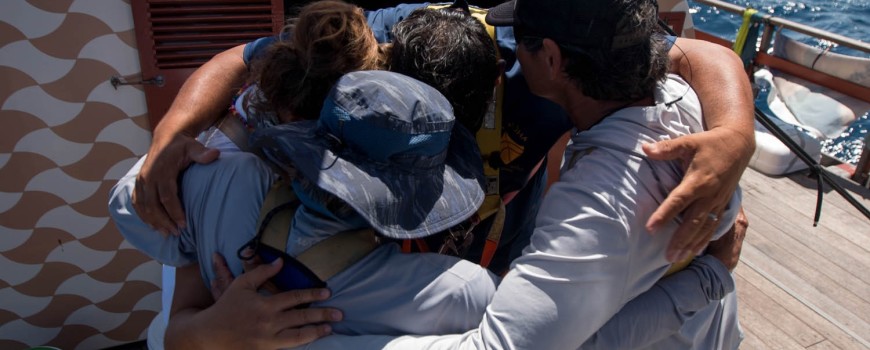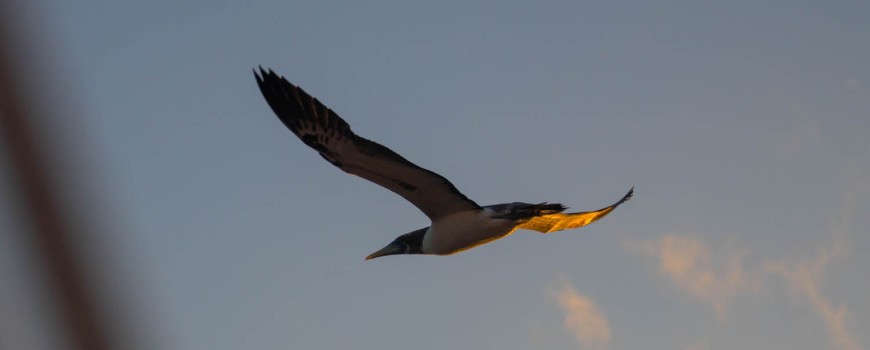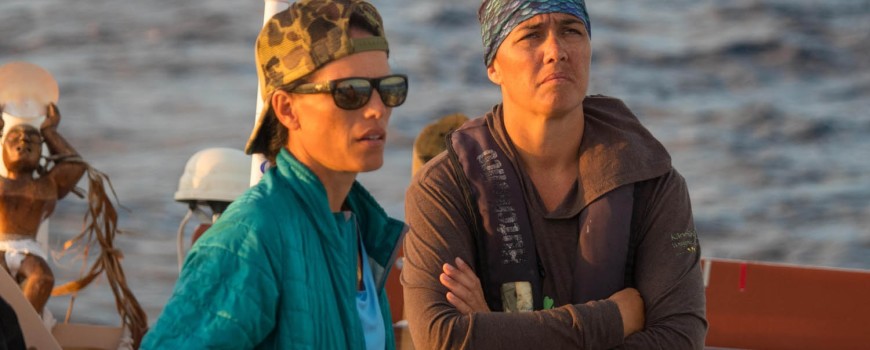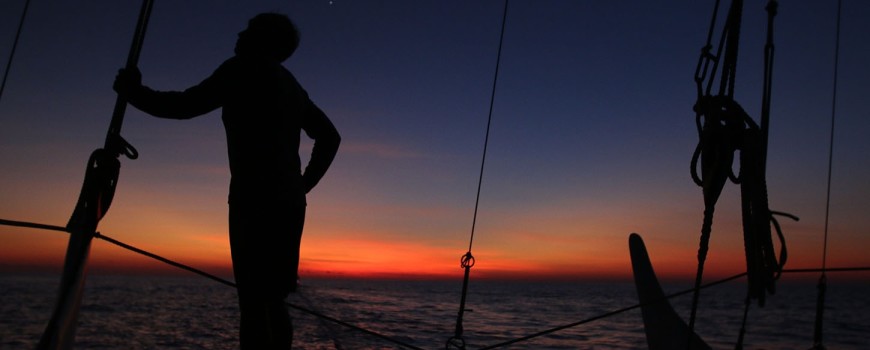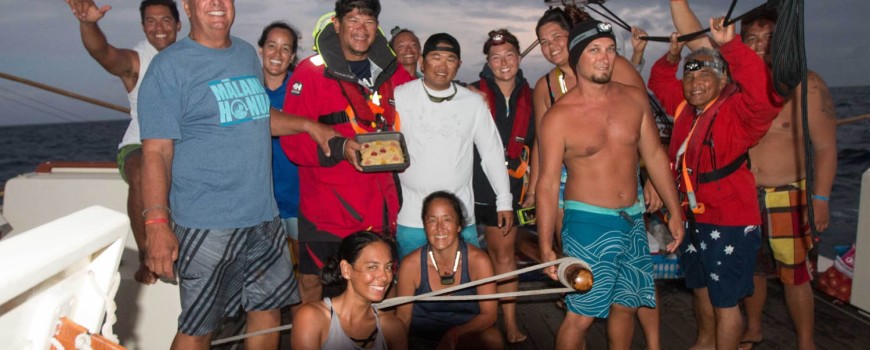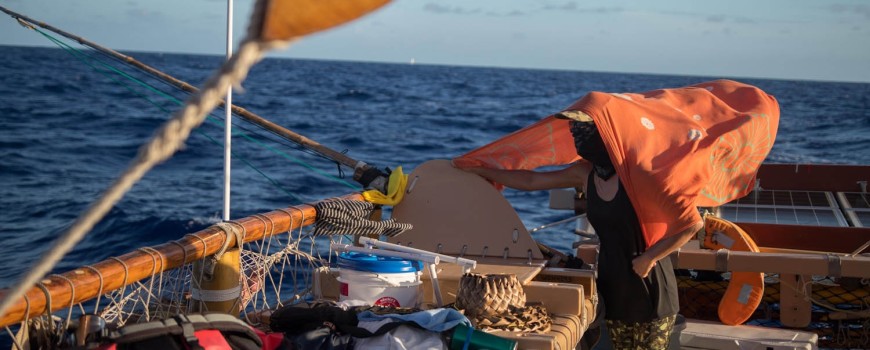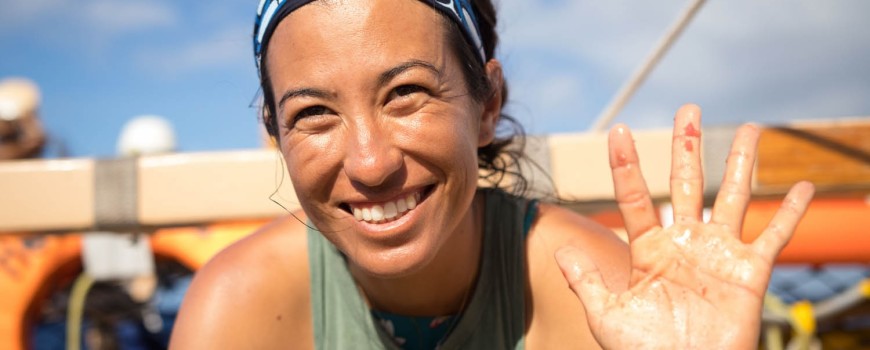Crew Blog | Wai: Gift of Life and Knowledge
Blog by Hikianalia crewmember Matt Caires
Making our way ʻĀkau back to our home, familiar winds are beginning to fill in and the crew is in good spirits and good health, thanks in part to the provisions generously provided by the communities in Mataiea and Tautira, Tahiti.
The most important resource that the communities were gracious enough to provide was wai for us to drink and sustain ourselves for the voyage home. Longtime Quartermaster, Keli, estimated we would need at least 200 gallons of fresh drinking water to sustain the crew on this leg  home.
home.
Now back in the northern hemisphere and closer to pulling our home out of the sea, the weight in wealth of this gift of water begins to resonate more and more every day – not only because it is literally sustaining our lives, but also for how the communities of Mataiea and Tautira revere their water resources and consider them integral to their identity.
Mataiea, we learned, is part of the greater municipality – Commune de Teva I Uta, whose motto is “Terre des Sources” or “land of springs”, so named for the many freshwater springs that are prevalent throughout the community, which provide fresh drinking water as well as water for the multitude of crops cultivated in the region. Talking story with our host families, the springs are more than a motto on the Commune flag, their presence and continued use are tied to their cultural identity. Our host families could not imagine Mataiea without the springs.
Similarly, with our ʻohana in Tautira, we observed families from the community flocking to a freshwater spring to fill containers for their homes – water fresher than any bottled source could provide. We too were permitted to fill our 5-gallon jugs from this source – a gift whose significance was not lost on the crew. Like Mataiea, Tautira has its own cultural ties to their local water resources; for some crewmembers like me, our Tautira ʻohana is tied to a waterfall – Vaimu – only a few hundred yards from where we were moored.
 Prominent among the many waterfalls that cut through the cliffs above Tautira, Vaimu’s wahi pana is derived from the sound – akin to the sound of a pu – the water makes as it crashes into the pool at its base. Facing the sea, it is a friendly greeting, a sound – as our ʻohana explained – meant to signal the arrival of canoes. According to them, they knew Hōkūleʻa was coming because every time Hōkūleʻa’s arrival is imminent, the waterfalls swell and the sounds become louder as if to be heard from sea, to meet the canoe and its crew with a friendly greeting.
Prominent among the many waterfalls that cut through the cliffs above Tautira, Vaimu’s wahi pana is derived from the sound – akin to the sound of a pu – the water makes as it crashes into the pool at its base. Facing the sea, it is a friendly greeting, a sound – as our ʻohana explained – meant to signal the arrival of canoes. According to them, they knew Hōkūleʻa was coming because every time Hōkūleʻa’s arrival is imminent, the waterfalls swell and the sounds become louder as if to be heard from sea, to meet the canoe and its crew with a friendly greeting.
Back on the waʻa and on our way home, it is important to take stock of the many place names for wai in our home, and what their current state is. Do we treat water simply as something to drink, or do we listen to the names of places and try and interpret what the water and the place is trying to tell us, as our ʻohana in Mataiea and Tautira do? I believe can we learn from their examples, and where restoration is needed, come together with those already working hard to become better stewards for our water resources so that together we as a community can restore living meaning and wai-based identity back to the multitude of communities whose wahi pana derives from wai that has sustained them for generations.
Hōkūle‘a Homecoming – Save the Date
We’ve got more details for you regarding Hōkūleʻa’s historic homecoming in June 2017! Click below to find out more:
